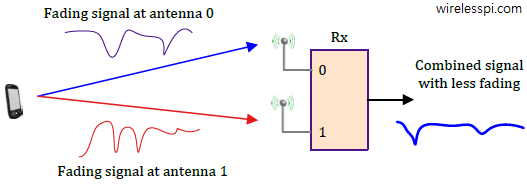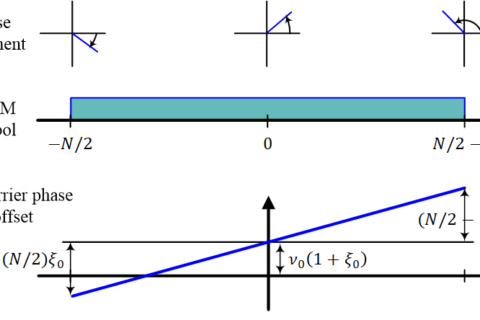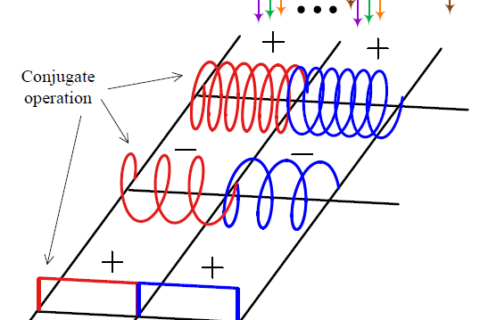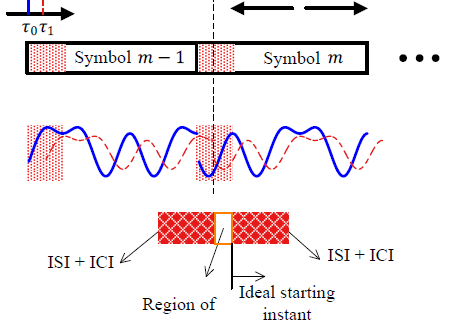When computing approaches the physical limits of clocking speeds, we turn towards multi-core architectures. When communication approaches the physical limits of transmission speeds, we turn towards multi-antenna systems. What exactly are the benefits that led to scientists and engineers choosing multiple antennas as the foundation of 4G and 5G PHY layers? While having spatial diversity was the original incentive for adding antennas at the base stations, it was discovered in mid 1990s that multiple antennas at Tx and/or Rx sides open up other possibilities not foreseen in single antenna systems.
Let us now describe three main techniques in this context.
Beamforming
Beamforming is the principal technology on which physical layer of 5G cellular networks is based. There are two different kinds of beamforming:
- Classical beamforming, also known as Line of Sight (LoS) or physical beamforming
- Generalized beamforming, also known as Non-Line of Sight (NLoS) or virtual beamforming
Borrowing from real and imaginary parts of a complex number, I think that real beamforming and imaginary beamforming would have been even better terminologies. As we explore in another article on beamforming, the former actually creates real beams while the latter performs mathematical operations after which the radiation pattern has no resemblance with a beam. But I settled on the expressions physical and virtual to avoid any confusion while still conveying the basic idea.
Interestingly, there has been a longstanding confusion between them although both of these types are radically different from one another. The main idea in both cases is to employ multiple antennas to enhance the signal strength from particulars users while suppressing the signals from interferers. As an analogy, a digital filter alters the signal contents in frequency domain, a process known as spectral filtering. In a similar manner, beamforming alters the signal contents in spatial domain. This is why it is also known as spatial filtering. The method of choosing suitable weights to accomplish this task depends on whether the beamforming is physical or virtual.
Physical beamforming has a rich history in signal processing algorithms for sonar and radar systems. It creates actual beams in space for transmission or reception and hence closely associated with Angle-of-Arrival (AoA) or Angle-of-Departure (AoD) of the signals. Similar to OFDM that creates parallel streams in frequency domain, classical or physical beamforming creates parallel beams in angular domain.
On the other hand, generalized or virtual beamforming in the simplest scenario implies that the same signal is emitted (or received) from each of the Tx (or Rx) antenna with appropriate phase and gain weighting such that the signal power is maximized for a particular user. Unlike steering the physical beam in a particular direction, the transmission or reception occurs in all directions but the main emphasis is on constructively adding multiple copies of the signal at the Rx thus reducing the multipath fading impact.
Spatial Multiplexing
In spatial multiplexing mode, an input data stream is split into multiple parallel streams in space domain, i.e., each of these streams is then transmitted through a different Tx chain. As long as the channel paths arrive from a multitude of directions exhibiting little correlation at the Rx antennas, Digital Signal Processing (DSP) techniques can be applied to transform one wireless medium into independent parallel channels. This MIMO mode was a major factor behind orders of magnitude higher data rates in the modern wireless systems because independent information is sent from multiple antennas at the same time over the same bandwidth. Detection algorithms such as Zero-Forcing (ZF) are employed to separate the modulation symbols from interference of other antennas.
Space-Time Coding
In this mode, special coding schemes are utilized in time and across antennas in a manner that signal diversity is enhanced at the Rx without any data rate penalty as compared to a single antenna system. Space-time codes enhance spatial diversity without any requirement for availability of channel estimates at a Tx possessing multiple antennas, an example of which we saw in Alamouti Codes.



